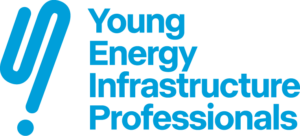

A secure and easy-to-use digital platform designed for collaboration between First Nations communities and oil and gas companies would effectively strengthen industry engagement with Indigenous Canadians, according to one Avatar Program presentation, and ‘TECUMSEH’ is the proposed name for that platform.
“Logging in and uploading information will be as easy as updating your Facebook or LinkedIn, but as secure as your banking app,” said Kaella-Marie Earle, an engineer-in-training with Enbridge Gas Inc. and a member of the team presenting this digital-platform concept to a panel of industry expert judges. “The TECUMSEH approach focuses on early engagement centred around reciprocal data capture and sharing.”
According to Earle, who is from the Wiikwemkoong Unceded Territory, TECUMSEH would be equipped with three main measures, including an elevated method for accessible project communication, leveraging existing digital resources such as geospatial data and drone technology, to allow operators and individual Indigenous nations to work together on the design of a custom consultation and permitting process, saving both time and money.
The second measure uses cloud technology to help the oil and gas industry both build capacity of Indigenous communities and leverage the growing Indigenous economy in procurement and supply-chain strategies. The third measure acts as a “highly-secured cloud-based data collaboration platform” for Indigenous people to collect cultural information that they alone would own and access, sharing at the discretion of the communities.
Earle said: “There’s a growing trend of improved engagement and inclusion of Indigenous peoples at all levels of business from multiple key players in the industry. There’s also a significant increase in Indigenous entrepreneurship and community cultural resurgence.”
On average, the midstream pipeline approval process takes five years, noted Jil Macdonald, director of enterprise artificial intelligence integration at AltaML Inc., and Canadian Energy Regulator (CER) data shows that there are 15,000 unique interaction points between project proponents and First Nations during the approval and construction phases. TECUMSEH would streamline those interactions by seven to 10 per cent.
“Using a recent Canadian pipeline as an example, this would result in the pipeline coming online 125 days earlier, accelerating the transportation of 66 million barrels, providing an economic impact of $3.7 billion,” she said, adding establishment of strong Indigenous relations prior to project initiation enhances trust and knowledge sharing between parties, enabling First Nations and industry to be aware of active energy projects and of the economic opportunities.
“Our approach would decrease consultation fatigue for Indigenous groups, and mitigate unforeseen costs and time overruns for companies.”
Four-phase approach
Gary Sangha, a supply-chain analyst at TC Energy Corporation, said his Avatar team envisions a four-phase TECUMSEH implementation approach, beginning by developing strategic relationships with specific industry partners while also building out a platform structure consisting of factual and verified industry and Indigenous data.
“Via collaboration with industry, we will identify the data inputs required for our platform, and build the various applications that’ll be used to assist in the consulting and relationship building with Indigenous peoples,” he said, adding the focus would then be on refining his team’s concept via a scalable approach, which ultimately would involve a pilot development involving midstream, government, regulatory and Indigenous partners.
Testing various technologies and data inputs on the platform before releasing all three of the applications is key to developing TECUMSEH, said Sangha. Collaboration is the platform’s top value. “Now more than ever we need a data-sharing platform to advance our industry for building relationships with Indigenous peoples. There is simply no Indigenous relations platform that pools multiple data sources and applications into one platform like we do.”
Companies will use their own resources and talent to build Indigenous data inputs and centralized, multifaceted technology into one platform through this scalable approach, he noted, resulting in a low-cost and low-risk business model for these stakeholders.
Technology to the rescue
The implementation of advanced technologies such as unmanned aerial vehicles as part of the digital platform, as well as GIS mapping and various other tools, can improve the efficiency of TECUMSEH, according to Richard Gunn, project manager at TC Energy.
“It doesn’t necessarily mean less communication, but communication that’s very efficient, effective and really gives a clear vision of what the proposed project [means] to Indigenous communities.”
Certain technologies currently in the piloting stage include weather balloon-style devices that give satellite-type connectivity, thus facilitating the TECUMSEH approach for remote Indigenous communities, noted Chris Piercey, urban demand advisor at Enbridge Inc.
“And so, there has been thought [put] into potentially having some of our funding go to being able to get some of these businesses or communities online as well. It’s more or less built in to what we’re asking and what we’re projecting.”
Sangha said his team’s proposed platform brings together industry as one team, facilitating collaboration and innovation via a single-source “truth platform” as companies strive to reduce operational risk and cost, while also building long-term relationships with Indigenous peoples.
As for the ‘TECUMSEH’ moniker, Earle told the Bulletin that name refers to a 19th Century Shawnee Indigenous leader, known for unifying different tribes. As for Earle, she was named recently to an Indigenous advisory committee that will work hand-in-hand with the Canada Energy Regulator (CER) board of directors.